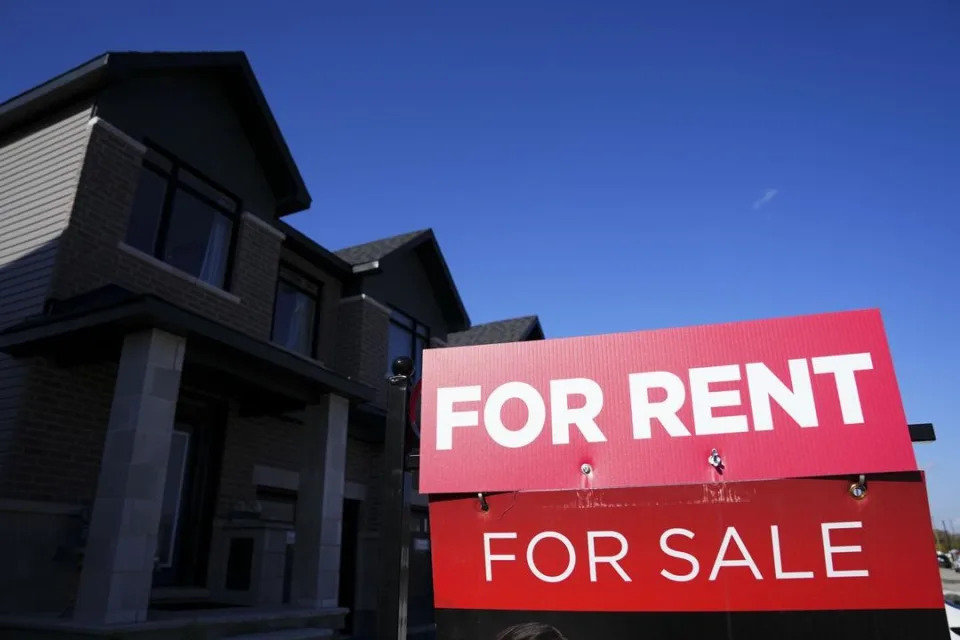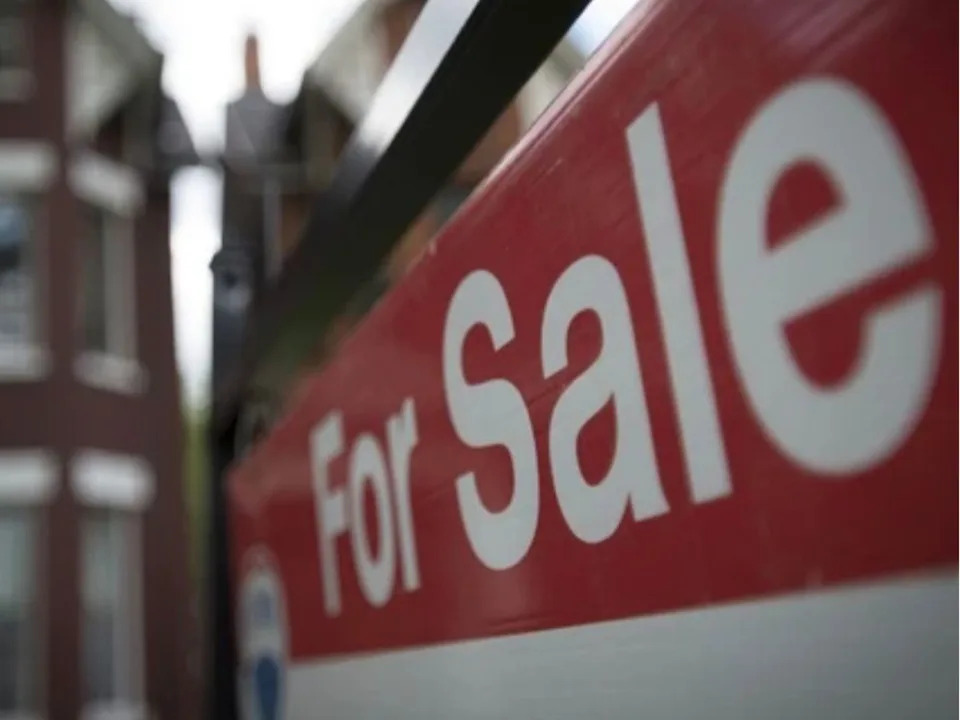MAIN STREET VS WALL STREET
Americans are feeling worse about the US economy amid inflation concerns
Josh Schafer
·Reporter
Updated Fri, May 10, 2024
US consumers are becoming increasingly worried about the trajectory of the US economy amid sticky inflation and the prospect of high interest rates for longer than initially hoped.
The latest University of Michigan consumer sentiment survey released Friday revealed a 13% decline in overall sentiment during the month of May. The index reading for the month came in at 67.4, its lowest level in six months, and well below economist expectations for a reading of 76.2.
Year-ahead inflation expectations hit 3.5% in Friday's report, up from 3.2% in the month prior. Longer-run inflation expectations rose to 3.1%, up from 3% the month prior.
"While consumers had been reserving judgment for the past few months, they now perceive negative developments on a number of dimensions," survey of consumers director Joanne Hsu said in a statement. "They expressed worries that inflation, unemployment and interest rates may all be moving in an unfavorable direction in the year ahead."
The drop in sentiment comes after several months of data showing that inflation's downward path hasn't been as smooth as many economists had hoped. Through the first three months of the year the core Personal Consumption Expenditures (PCE) index, which strips out the cost of food and energy and is closely watched by the Federal Reserve, rose at an annualized pace of 4.4%. This tracked significantly higher than the Fed's 2% goal, reversing a trend of significant easing in inflation to end 2023.
"In recent months, inflation has shown a lack of further progress toward our 2% objective, and we remain highly attentive to inflation risks," Federal Reserve Chair Jerome Powell said on May 1.
And while Powell said it's "unlikely" the next move for the Fed is an interest rate hike, the sticky inflation data appears to have put the Fed on a path to hold off on rate cuts longer than markets had hoped entering the year.
Meanwhile, various economic data releases have come in tepid, such as the most recent weaker-than-expected jobs report and data showing a contraction in manufacturing activity in April. On Thursday, weekly jobless claims rose unexpectedly, hitting their highest level since August 2023.
Friday's University of Michigan release follows a recent reading of consumer confidence from the Conference Board that showed confidence in April hit its lowest level since July 2022.
Powell has talked extensively about how consumer sentiment around inflation is something the central bank watches and will play a role in inflation returning to the 2% goal.
"For us to begin to reduce policy restriction, we'd want to be confident that inflation is moving sustainably down to 2%," Powell said on May 1. "And for sure one of the things we'd be looking at is the performance of inflation. We'd also be looking at inflation expectations, we'd be looking at the whole story, but clearly, incoming inflation data would be at the very heart of that decision."
Crucial readings on both inflation and consumer spending will come next week with retail sales and the Consumer Price Index for April, which are expected on Wednesday.Supporters of United States look dejected after the FIFA World Cup Qatar 2022 Round of 16 match between Netherlands and USA at Khalifa International Stadium on Dec. 3, 2022, in Doha, Qatar. (Mohammad Karamali/DeFodi Images via Getty Images) (DeFodi Images via Getty Images)
Josh Schafer is a reporter for Yahoo Finance. Follow him on X @_joshschafer.
The cost-of-living crisis is so bleak that some Gen Zers genuinely fear becoming homeless
Jane Thier
Sat, May 11, 2024

AsiaVision - Getty Images
There’s being cautious, and then there’s being terrified. When it comes to their financial outlook, many young adults have slipped into the second category.
That’s according to the Money Matters Report, a dense examination into American financial concerns published Thursday by saving and investing app Acorns. For the report, Acorns surveyed over 5,000 U.S. consumers about their attitudes and their concerns—and the results were dire.
Nearly a quarter of respondents said they’re actively concerned that the state of their finances could lead to homelessness. Broken down by generation, about a third of Gen Z and millennials said so, compared to just 11% of boomers.
Homelessness is an extreme outcome, but it’s not entirely beyond the scope of possibility. In December 2023, federal officials announced the U.S. experienced a 12% year-over-year increase in homelessness, bringing the nation to its highest reported level. The causes varied from impossibly steep rents, stagnant wages, and pandemic assistance payments sputtering to a stop.
As of six months ago, 653,000 people in the U.S. are homeless, which is the most ever tabulated since the country began conducting yearly data in 2007.
The main culprits behind the explosion in homelessness are “the shortage of affordable homes and the high cost of housing that have left many Americans living paycheck to paycheck and one crisis away from homelessness,” Jeff Olivet, executive director of the U.S. Interagency Council on Homelessness, said at the time.
That aligns with the findings in Acorns’ report; for workers across income brackets, the three biggest financial concerns are cost of living, inflation, and debt.
Long before the pandemic, America was gripped with shortages of affordable housing, everywhere from small rural towns to the economic city centers where most high-paying jobs can be found. Things have hardly improved since we took off our surgical masks.
As Fortune’s Alena Botros wrote, “since the pandemic-fueled housing boom, with both home prices and rents up substantially and mortgage rates at the highest level in decades, the single-family home has become much less accessible.” Indeed, rents still outpace salaries in 44 of the top 50 U.S. metropolitan areas.
Even for those who are gainfully employed, concerns overseas are becoming more difficult to ignore. Over half of respondents said macroeconomic events—like war and conflict—could further imperil their finances.
That’s to say nothing of the problems at home: a skyrocketing cost of living amid enduringly high inflation and debt. Many respondents, particularly younger ones, say they lack emergency funds, but fears over losing stability have nonetheless galvanized workers at all income levels to prioritize saving. Nearly 30% of respondents told Acorns they’ve never had an emergency fund to begin with, but among those who do have one, most say they’re upping their contributions, scared straight by the events unfolding around them.
Only around one-third of respondents said they expect to be more financially secure next year than they are now. Things generally skew more optimistic for the older crowd. The silent generation (which Acorns defines as those over 78 years old) were over twice as likely as the rest of the general population to claim they have no financial concerns at all.
"The everyday American is facing a deluge of bad financial news, from persistent increases in inflation to cost of living, all against a backdrop of global war and turmoil,” Noah Kerner, CEO of Acorns, wrote in the report. “What I'm encouraged by is that we can empirically confront the problem with a mix of education, tools, hope, and confidence.”
This story was originally featured on Fortune.com










